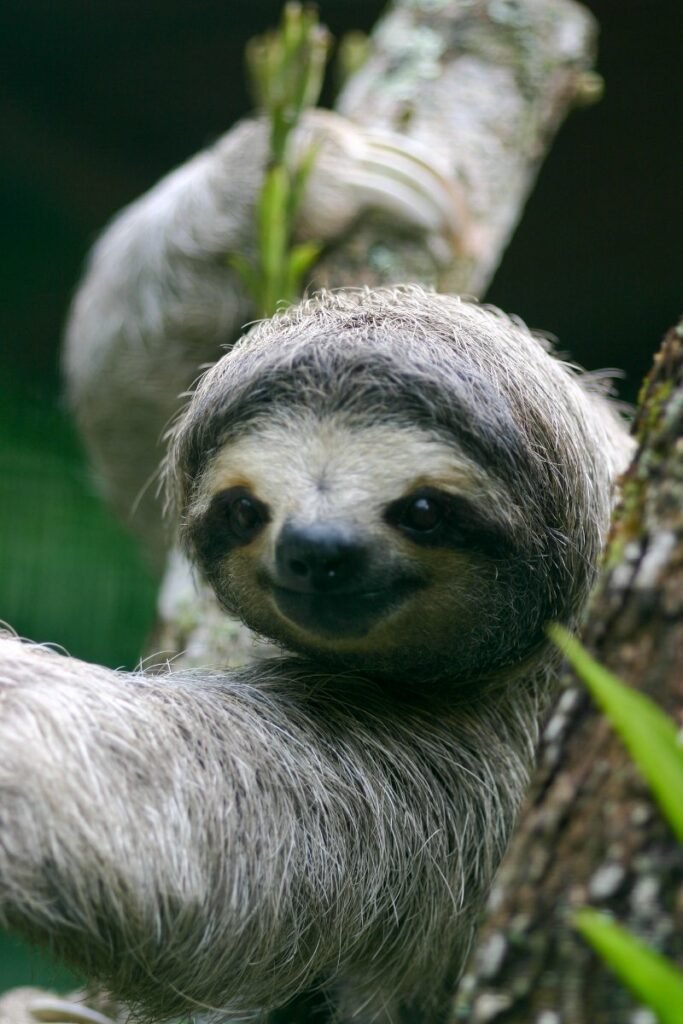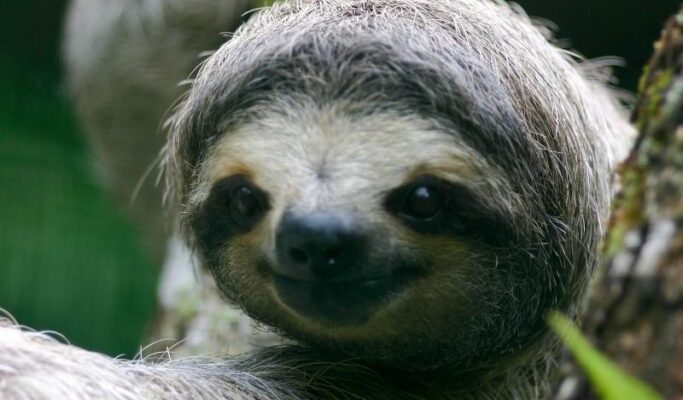
Imagine lounging on a hammock with a cool drink in hand, just like a sloth settled in its treetop. These creatures often embody tranquility. But under that calm exterior, there’s actually more going on than meets the eye. In this article, we’ll dive deep into the three-toed sloth’s behavior, habitat, and any potential risks they may pose to humans. So, let’s unravel this mystery together.
Understanding the Three-Toed Sloth
Three-toed sloths are fascinating creatures with unique traits that set them apart from other animals. They are primarily found in Central and South America, preferring tropical rainforests. With their long limbs and three sharp claws per foot, they’re built for life in the trees, where they spend most of their time hanging out upside down. This is where they feel safest, far from potential predators like jaguars and eagles.
Their diet mainly consists of leaves, fruits, and flowers. Sloths have a very slow metabolism, allowing them to thrive on low-nutrient food. This slow lifestyle means they move at a sluggish pace, giving them the reputation of being one of the slowest animals on Earth. Honestly, watching a sloth move can feel like waiting for paint to dry! However, their slow movements are an adaptation that helps them avoid detection by predators.
You might be wondering how they manage to stay safe in their treetop homes. Their greenish fur, due to algae growth, helps them blend in perfectly with the leaves. This camouflage is a defensive strategy, allowing them to go unnoticed while they munch on their leafy meals. So, while they may look cute and cuddly, they are cleverly equipped for survival.
Are Three-Toed Sloths Aggressive?
Here’s the thing: three-toed sloths aren’t typically aggressive. They are known for their calm demeanor and generally prefer to avoid confrontation. Most of the time, they will retreat into the trees or freeze in place rather than confront a threat. This makes them seem harmless, but does that mean they pose no risk?
While they are not predisposed to attack humans, sloths can defend themselves if provoked. If you were to approach one too closely, it might react by scratching with its long claws. Though these animals wouldn’t usually chase after you, it’s crucial to respect their space. Just imagine having a sleepy pet that isn’t in the mood for cuddles—sometimes, you just need to give them their space!
Also, let’s not forget that sloths can carry parasites. For instance, they can be home to certain types of ticks or other insects. If a sloth feels threatened and bites, there’s a risk of transmitting these parasites. So, while a direct, aggressive encounter is rare, there are still health factors to consider.
The Impact of Habitat Loss
Another aspect to think about is habitat loss and its effects on sloths. As humans continue to expand into rainforest areas for agriculture and development, sloths are losing their homes. This can lead to desperate sloths venturing closer to human habitats, increasing the chances of encounters.
Imagine a sloth that’s been displaced from its tree and is now wandering into a neighborhood. It’s not because the sloth wants trouble, but rather that it’s searching for food or shelter. In such situations, it might feel threatened, potentially leading to unforeseen conflicts.
This is why it’s crucial to consider conservation efforts. Protecting sloths and their habitats can help keep both them and humans safe. When their homes are secure, the chances of coming into contact with them decrease significantly. So let’s work together to keep these creatures safe in their natural environment.
Handling Encounters with Sloths
If you ever find yourself face-to-face with a three-toed sloth, it’s essential to know how to handle the situation. The best approach is to admire them from a distance. They’ll likely be chilling in a branch, and if you give them space, they’ll appreciate it. Respecting wildlife is key!
Should you find a sloth that seems injured or in distress, your best move is to contact a local wildlife rescue or sanctuary. They have the experience and knowledge to care for the animal properly. Remember, sloths don’t understand human intentions, so an attempt to “help” might inadvertently cause more stress.
It’s also a good idea to know the signs of a stressed sloth. If they begin to make loud vocalizations or display defensive behavior (like scratching), it’s best to back off and leave them alone. You wouldn’t want to intervene in a stressful situation without knowing the full picture, right?
Are Sloths Dangerous to Pets?
You might be wondering if sloths can pose a threat to your pets. Generally speaking, they aren’t a danger to dogs or cats. However, it’s crucial to supervise any interactions. Curious pets might approach a sloth out of instinct, and that could lead to an unexpected encounter.
Sloths can inflict a nasty scratch if they feel threatened, and a startled pet could react unpredictably. If your dog or cat tugs at the sloth, they might just retaliate. Teaching your pets to respect wildlife and stay at a safe distance will keep everyone safe. Imagine your dog barking excitedly at a sloth, only for the sloth to react defensively. It’s better to avoid that kind of scene altogether.
In short, while sloths aren’t aggressive creatures, they can defend themselves if they feel threatened. Keeping a respectful distance allows for peaceful coexistence between sloths, pets, and humans.
So, can the three-toed sloth be dangerous to humans? The short answer is: not really. These charming creatures are mostly docile and prefer a slow, peaceful life. By being aware of their habits and respecting their space, we can appreciate them without risk.
It’s essential to remember that sloths are wild animals, and like any wildlife, they deserve our respect. Whether you encounter one in the wild or just admire them through videos, knowing how to engage safely can make all the difference. Together, we can ensure a harmonious relationship between humans and sloths, allowing these unique creatures to thrive in their natural habitat. Remember, they may be slow, but they play an important role in our ecosystem, and it’s our job to protect them.

